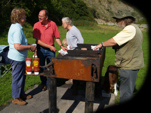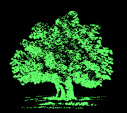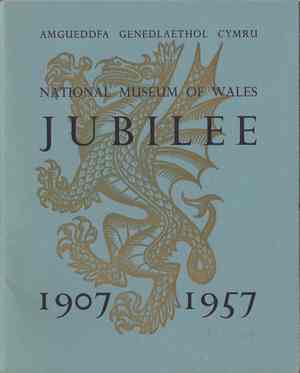
Cardiff
Naturalists' Society
Cymdeithas Naturiaethwyr
Caerdydd

David Dilwyn John, C.B.E., T.D., D.Sc., F.M.A., (1901-1995) 74th President
|
Back to the 150th Anniversary index David Dilwyn John (1901-1995) was educated at Bridgend School and University College of Wales, Aberystwyth, graduating BSc. in 1924 and MSc. in 1925. He then worked on the "Discovery Investigations" in the Antarctic polar regions. He participated in three cruises between 1925 and 1935. The first, on Discovery, between 1925 and 1927, worked in the seas around South Georgia and the Antarctic Peninsula. He then spent two years on RRS William Scoresby on a whale marking expedition around South Georgia. In 1931-33, he was Chief Scientist on Discovery II on the first winter circumnavigation of Antarctica. He then joined the the Natural History Museum in London as Assistant Keeper in charge of the Echinodermata Section in 1935 working on echinoderms collected by the Discovery, on the B.A.N.Z.A.R.E. expedition between 1929 and 1931, and on the Rosaura and Scotia cruises. He published a key expedition report on "The Second Antarctic Commission of the R.R.S. Discovery II." in the Geographical journal in 1934 and lectured on this to the Society (see below). Some further details on this and a picture of him in later life, are given in a Museum blog article on The Welsh in Antarctica. In that article there is also a picture of him on the John Peaks in the South Orkney Islands. The peaks were charted in 1933 and named after him. Note. that article is about 2 native born Welsh explorers, but does not include Mary E Gillham 96th President, who although born in Ealing London made Wales her home for most of her life and was the first British woman to Antarctica
He was away from the Natural History Museum on military service from August 1939 until July 1945 a regimental officer in Anti-Aircraft Command. He was promoted Major in 1942. The Society recorded his arrival in Cardiff and therefore membership of the society in Volume LXXIX of the transactions in 1948 as follows: -
He was the first member of staff of a major national museum to become Director, and also the first Welshman to fill the post. He had lectured to the Society before moving to Cardiff, and was soon an active members of the society giving many lectures of which a selection are documented here: -
The tenure of his directorship and his appreciation of the part that the society played in it's development was clearly given in the introduction he wrote in this booklet regarding the Museums golden jubilee celebrations in 1957. Jubilee Book written by D. Dilwyn John It starts with a quote from The Charter and continues : -
It is notable that at the end of the publication where gratitude is expressed, it is the Society and it's members who are first: -
Note... Sadly the Society no longer has direct representation on the court of governors as one of D. Dilwyn John's successors determined that it was inefficient to have external groups taking part on Museum Council. This author considers that the museum has lost immensely from losing its link to its own past as there have been a number of it's own publications since that either note the part that a single person played (and not always that), and forget that they came together as a working group in a Society, to make things happen. He was conferred the honour of C.B.E. in 1961 his retirement in 1968 after twenty years as Director. This was recorded in the Transactions for that year: -
His passing was simply recorded in the Society Newsletters in 1995 Back to the 150th Anniversary index Before this... Aubrey H. Jenkins A.R.P.S. 73rd President Next up... Arthur J Richard M.A., F.S.A. (?-1965) 75th President See our Full list of Presidents These pages are part of the Cardiff Naturalists' Society 150th Anniversary celebrations and are about our history and are celebrating the people who developed our Society and helped build the city and the cultural heritage of Cardiff. You can read more about that using the links above If you want to read about the ways we study the wildlife and environment of the Cardiff area and its surroundings, and about the talks we have about the wildlife of the world, and find the programme of talks, walks and other events that we do then please take a look at our main website, our blog and our facebook and twitter feeds for up to date news |
